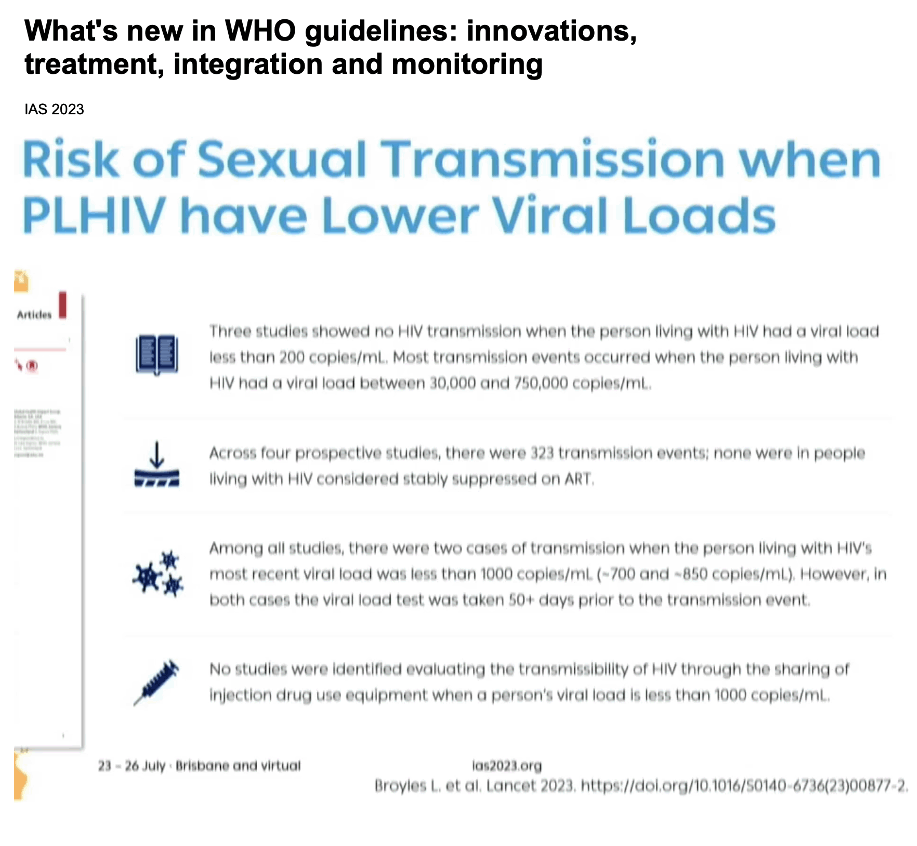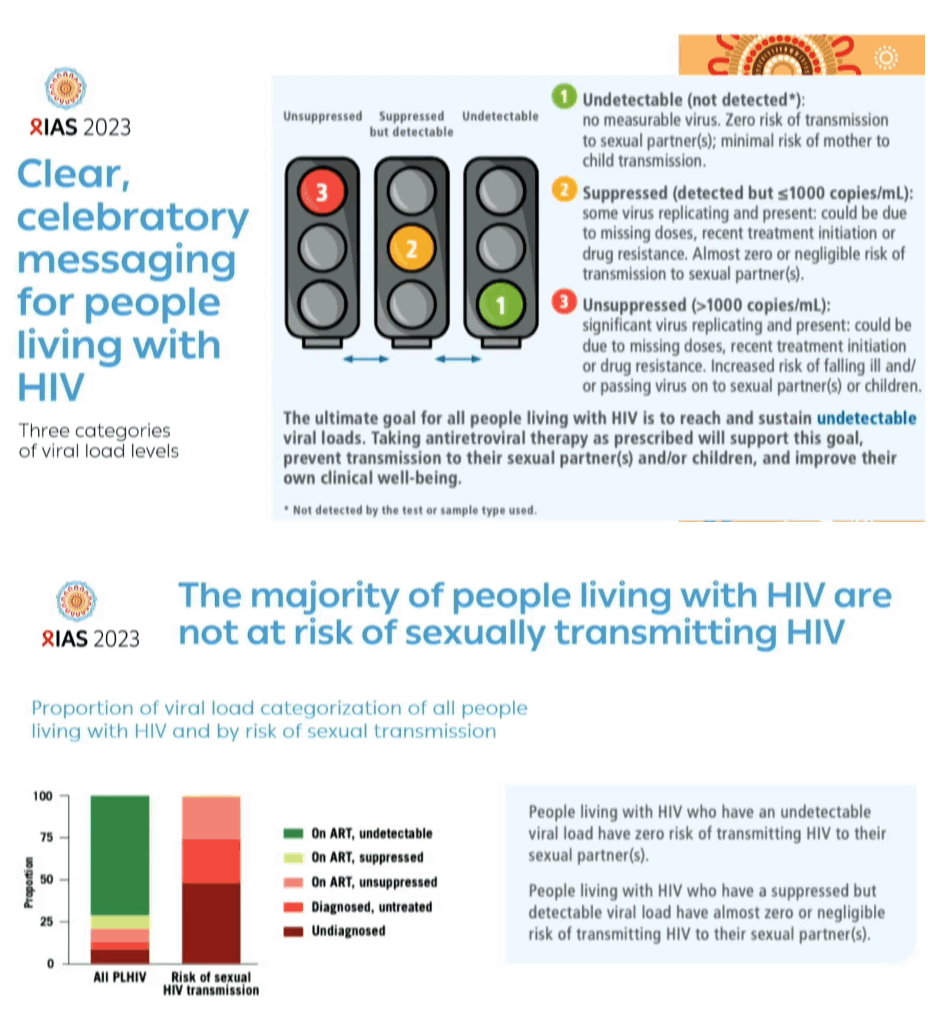 |
 |
 |
| |
The risk of sexual transmission of HIV in individuals
with low-level HIV viraemia: a systematic review (IAS)
|
| |
| |
Download the PDF
Published:July 22, 2023
Summary
Background
The risk of sexual transmission of HIV from individuals with low-level HIV viraemia receiving antiretroviral therapy (ART) has important public health implications, especially in resource-limited settings that use alternatives to plasma-based viral load testing. This Article summarises the evidence related to sexual transmission of HIV at varying HIV viral load levels to inform messaging for people living with HIV, their partners, their health-care providers, and the wider public.
Methods
We conducted a systematic review and searched PubMed, MEDLINE, Cochrane Central Register of Controlled Trials, Embase, Conference Proceedings Citation Index-Science, and WHO Global Index Medicus, for work published from Jan 1, 2010 to Nov 17, 2022. Studies were included if they pertained to sexual transmission between serodiscordant couples at various levels of viraemia, the science behind undetectable=untransmittable, or the public health impact of low-level viraemia. Studies were excluded if they did not specify viral load thresholds or a definition for low-level viraemia or did not provide quantitative viral load information for transmission outcomes. Reviews, non-research letters, commentaries, and editorials were excluded. Risk of bias was evaluated using the ROBINS-I framework. Data were extracted and summarised with a focus on HIV sexual transmission at varying HIV viral loads.
Findings
244 studies were identified and eight were included in the analysis, comprising 7762 serodiscordant couples across 25 countries. The certainty of evidence was moderate; the risk of bias was low. Three studies showed no HIV transmission when the partner living with HIV had a viral load less than 200 copies per mL. Across the remaining four prospective studies, there were 323 transmission events; none were in patients considered stably suppressed on ART. Among all studies there were two cases of transmission when the index patient's (ie, patient with previously diagnosed HIV infection) most recent viral load was less than 1000 copies per mL. However, interpretation of both cases was complicated by long intervals (ie, 50 days and 53 days) between the transmission date and the most recent index viral load result.
Interpretation
There is almost zero risk of sexual transmission of HIV with viral loads of less than 1000 copies per mL. These data provide a powerful opportunity to destigmatise HIV and promote adherence to ART through dissemination of this positive public health message. These findings can also promote access to viral load testing in resource-limited settings for all people living with HIV by facilitating uptake of alternative sample types and technologies.
https://www.thelancet.com/journals/lancet/article/PIIS0140-6736(23)00877-2/fulltext


|
| |
|
 |
 |
|
|